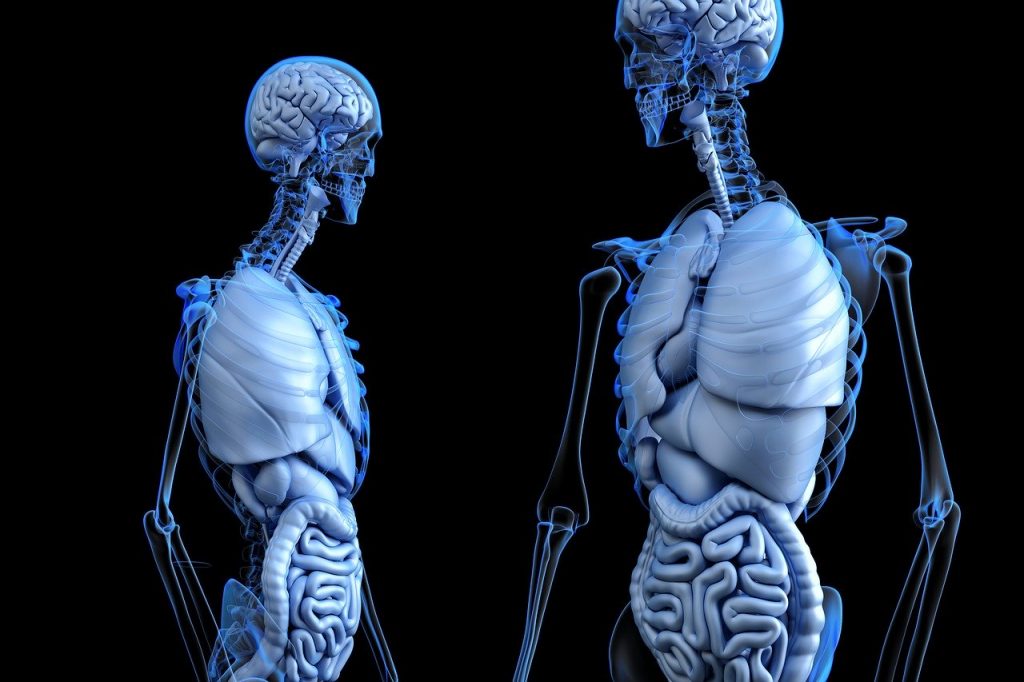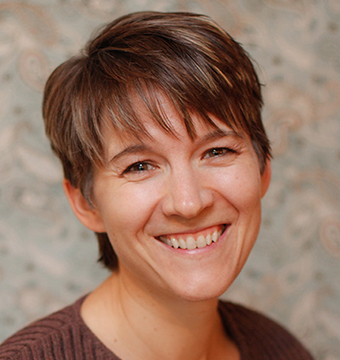
Like many of you reading this, when I was in high school, I was a strong student.I was involved in sports (though often cheering my teammates on from the bench, I bloomed late, “bloomed” being a strong word to use when describing my athleticism). I had a job and was a leader in extra-curricular activities. I had good friends and generally enjoyed school life.Teachers and coaches liked me, and they often asked, “What do you want to do when you graduate?” Since I was enamored with my physics teacher, I usually responded with “I want to become a solar engineer.”
My basketball coach wouldn’t have any of that. “No, no, no. You need to be a physical therapist. That would be the perfect job for you.” I would politely say, “We’ll see, ” and promptly turn away and roll my eyes, thinking, “a THERAPIST? No way! Therapists have people laying on their couches, telling them their problems all day! They talk about their horrible upbringings and their messed up marriages!” Plus, this guy kept me on the bench all the time, what did he know? It didn’t help that my mom was also nudging me in the exact same direction, and if Mom and Coach wanted me to do this, surely it was something to rebel against.
But, sometimes moms (and coaches) know best, and my sophomore year of college, Mom literally dragged me to work with her for the day. She was a rehab aide at a county facility at the time, and she knew physics and calculus were turning out to be a thorn in my side. There I watched a PT in action for the first time, performing gait training with a stroke patient in the parallel bars, and I was instantly hooked. This was physical! This was social! This was important! This even looked like it could be fun! And there were no couches! Sign me up!It was a very decisive moment, and I never questioned my career path for the duration of my schooling, nor for the first 6-8 years of my career.
Now, well over twenty years later, I’ve survived one season of massive burnout and career questioning, which occurred when my manual skills just couldn’t fix everyone, no matter how many courses I went to. And since rallying from that and awakening to the bio-psycho-social model, I spend a great deal of time doing what I bristled at as a snotty high school student: listening to problems. And not just physical problems. I have a high volume of patients with chronic pain conditions, but even those with acute pain have a lot going on. Let’s face it, life is just hard. People are complex; relationships are messy; tragedies happen. Everyone experiences trials, and pain is a trial in and of itself.
As the bio-psycho-social model takes firmer root in our profession, I have found myself increasingly interested in the psychology of pain. What is the difference between mental pain, emotional pain, and physical pain? The IASP defines pain as an unpleasant sensory and emotional experience associated with actual or potential tissue damage, and the brain areas active during physical pain experiences look remarkably similar to those active in individuals with depression. Steve Schmidt, PT, MPhysio, FAAOMPT, RNG (Really Nice Guy), did a remarkable job showing the overlap at a recent conference in his presentation: “When Pain, Stress and Depression Collide: The Metaplasticity of the Protect by Pain System.” His talk left me amazed, once again, at the dark side of neuroplasticity, with the wisdom of Patrick Wall’s quote, “It is inherently ridiculous to consider pain an isolated entity,” resonating strongly.
It also begged the question: What if someone has never known anything other than the need to protect themselves? What do early childhood experiences, occurring during a rich neuroplastic time, have to do with the patient in pain that we see before us? You know, the one who is driving up our cynicism and burnout, or that we judge as med-seeking or pursuing secondary gain? (I am sad to say this was me before I understood the bio-psycho-social model, and this can still be me on a bad day). What role does the past play in the development of chronic pain? And, is there value in that good old-fashioned-talking-about-the- past-while-lying-on-the-couch that I so strongly (and negatively) associated with the word “therapy” as a teenager?
A recent book that is getting some attention by the general public, thanks to NPR, explores these concepts: “Back In Control,” by David Hanscom. A couple of my patients mentioned that the PNE we went through together reminded them a great deal of Hanscom’s book, so I decided to read it.It is a great resource for patients, as readers journey with Dr. Hanscom, a spine deformity surgeon, who himself spent 15 years in the “Abyss” of chronic pain, anxiety, and ultimately, OCD. In his highly transparent account of his own journey, he connects the dots of his physical and mental pain to a past that he was able to successfully suppress for many years, but that ultimately needed to be dealt with through personal reflection, psychotherapy, mindfulness, forgiveness, and ultimately, even play. He offers patients concrete tools to begin to peel away the layers associated with their pain, in particular, the role of anger. Dr. Hanscom finds that most of his patients, once on a path to deep healing, decide against surgery, even when structural and appropriate surgical targets exist. A section in Hanscom’s book really stood out to me, and I wondered why I never learned about this in PT school: ACEs.
ACE stands for Adverse Childhood Event.The identified ACEs for a landmark study consist of Abuse (emotional abuse, physical abuse, sexual abuse), Household Challenges (mother treated violently, household substance abuse, mental illness in the household, parental separation or divorce, criminal household member) and Neglect (emotional neglect, physical neglect). From 1995-1997, Kaiser Permanente conducted two waves of data collection, encompassing over 17,000 members of their HMO receiving physical exams. The participants completed extensive surveys on their childhood, including histories of abuse and neglect, and compared these histories with later-life health and well-being. The data collected has been utilized in several subsequent studies, and the statistics are sobering.
According to the CDC’s website on violence prevention, “Adverse Childhood Experiences (ACEs) are common. Almost two-thirds of study participants reported at least one ACE, and more than one in five reported three or more ACEs. The ACE score, a total sum of the different categories of ACEs reported by participants, is used to assess cumulative childhood stress. Study findings repeatedly reveal a graded dose-response relationship between ACEs and negative health and well-being outcomes across the life course. As the number of ACEs increases, so does the risk for the following (non-exhaustive list):”
- Alcoholism and alcohol abuse
- Chronic obstructive pulmonary disease
- Depression
- Fetal death
- Illicit drug use
- Ischemic heart disease
- Liver disease
- Poor work performance
- Financial stress
- Risk for intimate partner violence
- Multiple sexual partners
- Sexually transmitted diseases
- Smoking
- Suicide attempts
- Unintended pregnancies
- Early initiation of smoking
- Early initiation of sexual activity
- Adolescent pregnancy
- Risk for sexual violence
- Poor academic achievement
The ACE study and CDC website are worth exploring and reflecting on.Subsequent studies linked on the site show increased incidence of frequent headaches, obesity, and many other challenging diagnoses we encounter on a regular basis in the clinic.
I am not advocating that we as PTs should buy couches and ask our patients to tell us about their childhood, nor would I say it is okay for anyone to live in the past and blame every present situation on their formative years. But, what this information does do is give me pause. That challenging person sitting before me, who is only there because the doctor says she needs to in order to get her refill, has a story.
I’m pretty sure that when she was a little girl or a sassy high school student, and her favorite teacher asked her what she wanted to be when she grew up, she did not respond, “a person in chronic pain.” Yet that is the vocation that some of our patients unwittingly find themselves in. Pain can become an identity, and that identity may have roots that go way back to ACEs that would break our hearts if we only knew.
So, what to do about this? I’m not sure I have a great answer. Obviously, we listen. We empathize. We support, encourage, and equip our patients to the very best of our ability. We refer to our colleagues in the counseling or pastoral fields when seemingly dangerous skeletons come out of the closet that we are not equipped to deal with. And sometimes we just have to recognize that there are layers and layers that will need to be addressed before that hurting person inside can become free of the grip of the “Protect By Pain” system. Our job is messy and hard and often, it’s ridiculously sad. But, as Steve Schmidt encouraged us at the conclusion of his presentation, neuroplasticity is not all dark. It actually brings great hope: “All individuals have untapped potential for improvement” Dr. Herman Kabat, MD, PhD. Let’s move forward with a renewed commitment to help them tap that potential, even if that includes taking a look back at the past.
Any thoughts on ACEs? How prepared are you to respond when these events are revealed? How is your referral network when it comes to psycho-social issues that make you feel in over your head?

––– Comments
Jessie Podolak
Commented • September 20, 2017
Thanks for the resource, Soren!!
Soren Grieve
Commented • September 19, 2017
Jesse, thanks for bringing out these points. Another good resource is in the mental health field, a book called The Circle of Security Intervention that explores childhood attachment and the effects on adult physical and mental health. They make the case that poor attachment, resulting from the list of ACEs that you give, changes the architecture of the brain and how the child responds to any stressful event. The threat assessment is altered. Knowing that, I don't necessarily ask my patients how their childhood was, but if it comes up I try to help them connect the dots.
Eve
Commented • August 10, 2017
This really hits home for me. I have am amazing PT who listens, empathizes and cares about the "whole" me.
Jessie Podolak
Commented • August 10, 2017
I echo your sentiments, Dr. Hanscom! Working through the bio-psycho-social lens with people "in the abyss" is deeply meaningful work, and I am grateful to have found like-minded and brilliant professionals to learn from and grow with. Thank you for sharing your story through your book. It is touching and changing many lives. I look forward to connecting with you personally at some point soon! Warm Regards, Jessie
David Hanscom
Commented • August 10, 2017
Hi Jesse, Thanks a lot for your kind words of support. This whole phase of my practice has been unexpected and incredibly rewarding. Let me know if you would like to catch up by phone and I am happy you have found the concepts useful. Best regards, David Hanscom
Jessie Podolak
Commented • August 8, 2017
Great resource, Kory! Thank you!
Kory Zimney
Commented • August 8, 2017
Here is a TED talk about ACE that may be of interest to some. https://www.ted.com/talks/nadine_burke_harris_how_childhood_trauma_affects_health_across_a_lifetime#t-15635